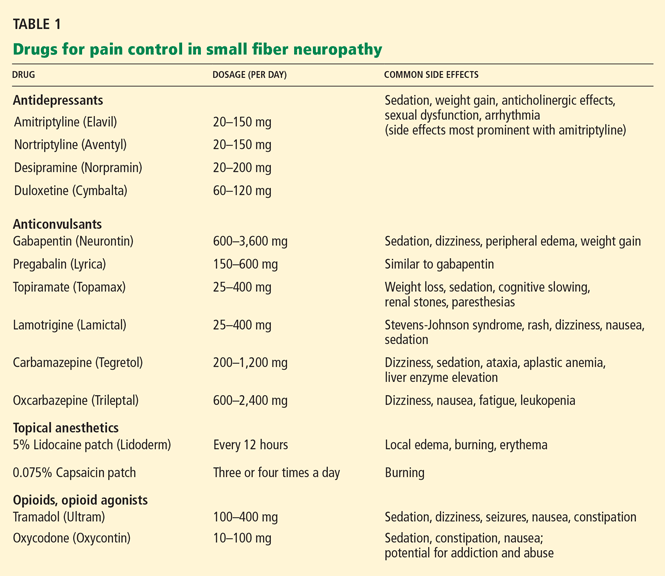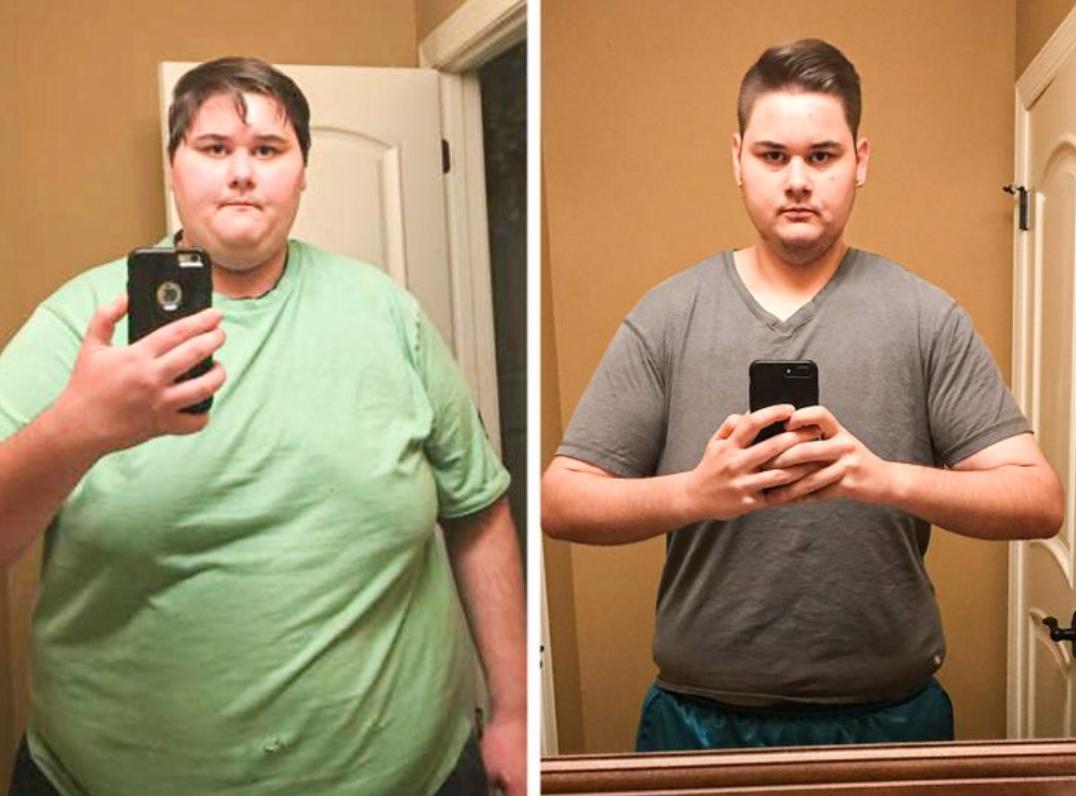Gabapentin Weight Loss: Changes in Body Weight with Chronic, High-Dose Gabapentin Therapy
Does gabapentin cause weight gain? What are the changes in body weight with chronic, high-dose gabapentin therapy? Explore the findings from a research study on the effects of prophylactic gabapentin on weight loss and narcotic dependency in patients with oropharyngeal cancer undergoing radiation therapy.
Prophylactic Gabapentin Linked to Weight Loss and Narcotic Dependency Reduction
Researchers from Scottsdale, Arizona presented findings at the 2016 Multidisciplinary Head and Neck Cancer Symposium, which showed that patients with oropharyngeal cancer undergoing radiation therapy experienced diminished narcotic dependency and weight loss when given prophylactic gabapentin at a dose of 300 mg 3 times daily (TID).
Pain and weight loss are common side effects of radiation therapy in patients with head and neck cancer, and although narcotic pain medication (NPM) is often used, these medications come with their own side effects such as nausea, constipation, and respiratory depression. Furthermore, neuropathic pain often responds poorly to NPM, requiring escalating doses for pain relief.

Evaluating Ideal Dosages of Prophylactic Gabapentin
As part of a retrospective chart review, researchers sought to determine the ideal dose of prophylactic gabapentin needed to reduce weight loss and narcotic dependency among patients with oropharyngeal cancer undergoing radiation therapy with or without chemotherapy.
The study included 64 patients who had completed their prescribed radiation therapy courses and had at least 1 month of post-radiation therapy follow-up. Of these, 31 patients received prophylactic gabapentin (≥300 mg TID) within the first 2 weeks of radiotherapy, while 33 patients did not receive prophylactic gabapentin.
Less Weight Loss with Prophylactic Gabapentin Use
The researchers found that patients with oropharyngeal cancer who initiated ≥300 mg TID of prophylactic gabapentin within the first 2 weeks of radiotherapy experienced less unintentional weight loss and initiated NPM later in their radiation therapy course compared to patients who were not treated with prophylactic gabapentin. However, total NPM use was not diminished in patients who received prophylactic gabapentin.

Collectively, the prophylactic gabapentin group had 47% less weight loss than the retrospective control group (4.10 kg vs 9.02 kg, P <.01). The effect of prophylactic gabapentin was not influenced by oropharyngeal subsite and p16 status, and no adverse effects were attributed to its use.
Subgroup Analysis: Benefits of Prophylactic Gabapentin
Patients who underwent upfront surgery and those with p16-positive disease saw the most benefit from prophylactic gabapentin use. The surgery group given prophylactic gabapentin had 68.5% less weight loss than the untreated group (2.40 kg vs 7.63 kg, P = .02), and the p16-positive group receiving prophylactic gabapentin showed 60% less weight loss than their untreated counterparts (3.61 kg vs 9.02 kg; P = .004).
Limitations and Future Directions
The researchers acknowledge that the study did not elucidate a direct diminishment in overall NPM requirement with the addition of prophylactic gabapentin, which they attribute to the low number of patients and the retrospective nature of the investigation. They assert that the data support continued exploration of prophylactic gabapentin use to delay the use of or serve as an adjunct to standard NPM regimens in this patient population.

The researchers state that their institution intends to further explore the impact of higher prophylactic gabapentin dosing and timing and its impact on feeding tube use and quality of life metrics.
Conclusion
The study findings suggest that prophylactic gabapentin use in patients with oropharyngeal cancer undergoing radiation therapy can lead to reduced weight loss, particularly in those who have undergone upfront surgery or have p16-positive disease. However, the study did not find a direct reduction in overall narcotic pain medication use. Further research is needed to fully elucidate the potential benefits of prophylactic gabapentin in this patient population.
Prophylactic Gabapentin Linked to Weight Loss, Narcotic Dependency
Scottsdale, AZ—Patients with oropharyngeal cancer undergoing radiation therapy experienced diminished narcotic dependency and weight loss with the use of prophylactic gabapentin, specifically given at a dose of 300 mg 3 times daily (TID), according to research presented at the 2016 Multidisciplinary Head and Neck Cancer Symposium.1
In patients with head and neck cancer, pain and weight loss are common side effects of radiation therapy, and although narcotic pain medication (NPM) is often used, these medications are not without their own side effects (eg, nausea, constipation, and respiratory depression). Furthermore, neuropathic pain often responds poorly to NPM, and requires escalating doses for pain relief.
“Single-institution retrospective reports have provided evidence that prophylactic gabapentin…may reduce the need for NPM in patients undergoing radiation therapy, however the ideal dosing schedule is unknown,” explained Tuo Dong, Howard University College of Medicine, Washington, DC, and colleagues.
Evaluating Ideal Dosages
As part of a retrospective chart review, the investigators sought to determine the ideal dose of prophylactic gabapentin needed to reduce weight loss and narcotic dependency among patients with oropharyngeal cancer undergoing radiation therapy with or without chemotherapy.
Patients with oropharyngeal cancer treated with radiotherapy in their clinic over the past 3 years were included in the analysis. Patients were stratified by use of prophylactic gabapentin. Dr Dong and colleagues then compared the quantity of NPM, time to initiation of NPM, and amount of weight loss between patients who did and did not receive prophylactic gabapentin.
The 64 patients evaluated in the study completed their prescribed radiation therapy courses, followed by ≥1 months of post-radiation therapy follow-up.
The majority of the study population were men (n = 55), and 75.6% of patients received concurrent chemotherapy. A total of 31 patients received prophylactic gabapentin (≥300 mg TID) within the first 2 weeks of radiotherapy, whereas 33 patients did not receive prophylactic gabapentin.
Less Weight Loss Seen with Prophylactic Gabapentin Use
Dr Dong and colleagues found that the patients with oropharyngeal cancer who initiated ≥300 mg TID of prophylactic gabapentin within the first 2 weeks of radiotherapy experienced less unintentional weight loss, and initiated NPM later in their radiation therapy course compared with patients who were not treated with prophylactic gabapentin. However, total NPM use was not found to be diminished in patients who received prophylactic gabapentin.
Collectively, the prophylactic gabapentin group had 47% less weight loss than the retrospective control group (4.10 kg vs 9.02 kg, P <.01). The effect of prophylactic gabapentin was not influenced by oropharyngeal subsite and p16 status, and no adverse effects were attributed to its use.
Patients who underwent upfront surgery, and patients with p16-positive disease, saw the most benefit from prophylactic gabapentin use. The surgery group given prophylactic gabapentin had 68. 5% less weight loss than the untreated group (2.40 kg vs 7.63 kg, P = .02), and the p16-positive group receiving prophylactic gabapentin showed 60% less weight loss than their untreated counterparts (3.61 kg vs 9.02 kg; P = .004).
5% less weight loss than the untreated group (2.40 kg vs 7.63 kg, P = .02), and the p16-positive group receiving prophylactic gabapentin showed 60% less weight loss than their untreated counterparts (3.61 kg vs 9.02 kg; P = .004).
“Although this study did not elucidate a direct diminishment in overall NPM requirement with the addition of prophylactic gabapentin, this may be due to the low number of patients and the retrospective nature of our investigation,” said Dr Dong.
The researchers assert that these data support continued exploration of prophylactic gabapentin use to delay the use of—or serve as an adjunct to—standard NPM regimens in this patient population.
“Our institution intends to further explore the impact of higher prophylactic gabapentin dosing and timing and its impact on feeding tube use and quality of life metrics,” Dr Dong stated.
Reference
1. Dong T, Jones GC, Scoble D, et al. Retrospective analysis of diminished narcotic dependency and weight loss with prophylactic gabapentin use in patients undergoing radiation therapy for oropharyngeal cancer. Presented at: Multidisciplinary Head and Neck Cancer Symposium; February 18-20, 2016; Scottsdale, AZ. www.redjournal.org/article/S0360-3016(15)02052-0/pdf. Accessed April 4, 2016.
Presented at: Multidisciplinary Head and Neck Cancer Symposium; February 18-20, 2016; Scottsdale, AZ. www.redjournal.org/article/S0360-3016(15)02052-0/pdf. Accessed April 4, 2016.
Does gabapentin cause weight gain?
Medically reviewed by Sally Chao, MD. Last updated on Sep 26, 2022.
Gabapentin may cause weight gain, but it is an uncommon side effect. Studies have shown that a small number of people taking gabapentin, a drug used to treat epilepsy and postherpetic neuralgia, experienced weight gain. People who do gain weight may gain about 5 pounds after 6 weeks of use.
- In people with epilepsy, weight gain occurred in 3% of people older than 12 years of age who were taking gabapentin (compared to 2% of people taking the placebo). Weight gain was also seen at a similar rate in pediatric epilepsy patients who were 3 to 12 years old.
- In people with postherpetic neuralgia, 2% of patients taking gabapentin experienced weight gain. No weight gain was found among people taking the placebo.

The cause of weight gain with gabapentin is likely due to increased appetite. You may be hungry more often. In some cases, weight gain may be due to fluid retention, another side effect of gabapentin. Another possible cause is not getting enough exercise if gabapentin is causing fatigue.
Some ways to avoid weight gain include:
- Eating a healthy and balanced diet
- Eating smaller portion sizes
- Avoiding high-calorie snacks and desserts like chips, pastries and sweets
- Eating low-calorie snacks like fruits and vegetables to manage hunger
- Getting regular exercise
Swelling from fluid retention may be reduced by:
- Sitting with your feet raised
- Avoiding standing for long periods of time
If gabapentin is causing you to gain weight, do not stop taking this drug on your own. Stopping the drug suddenly can lead to serious problems, especially if you are taking gabapentin for seizures. Abruptly stopping a seizure medicine can cause seizures that won’t stop.
Abruptly stopping a seizure medicine can cause seizures that won’t stop.
Weight gain is one of many possible side effects. The most common side effects with gabapentin include:
- Clumsiness
- Viral infection
- Sleepiness
- Nausea and vomiting
- Speaking difficulties
- Tremor
- Swelling, usually involving the legs and feet
- Fatigue
- Fever
- Movements that are jerky
- Coordination difficulties
- Double vision
- Unusual eye movement
References
- DailyMed. Neurontin. April 14, 2020. Available at: https://dailymed.nlm.nih.gov/dailymed/drugInfo.cfm?setid=ee9ad9ed-6d9f-4ee1-9d7f-cfad438df388. [Accessed September 3, 2020].
- National Health Service (NHS). Gabapentin. Available at: https://www.nhs.uk/medicines/gabapentin/. [Accessed September 3, 2020].
- Domecq JP, Prutsky G, Leppin A, et al.
 Drugs Commonly Associated With Weight Change: A Systematic Review and Meta-analysis. J Clin Endocrinol Metab. 2015 Feb; 100(2):363–370. https://dx.doi.org/10.1210%2Fjc.2014-3421.
Drugs Commonly Associated With Weight Change: A Systematic Review and Meta-analysis. J Clin Endocrinol Metab. 2015 Feb; 100(2):363–370. https://dx.doi.org/10.1210%2Fjc.2014-3421. - National Institute of Diabetes and Digestive and Kidney Diseases (NIDDK). Eating & Physical Activity to Lose or Maintain Weight. January 2019. Available at: https://www.niddk.nih.gov/health-information/weight-management/adult-overweight-obesity/eating-physical-activity. [Accessed September 14, 2020].
- MedlinePlus. Swelling. October 8, 2018. Available at: https://medlineplus.gov/ency/article/003103.htm. [Accessed September 14, 2020].
Related medical questions
- Lyrica vs Gabapentin: What’s the difference?
- Does gabapentin help treat nerve pain?
- Is gabapentin considered a painkiller?
- How long does gabapentin withdrawal last?
- How long does it take gabapentin to work?
- How does gabapentin make you feel?
- Is gabapentin safe for dogs?
- Is gabapentin a controlled substance / narcotic?
- Does gabapentin help you sleep?
- Is gabapentin safe for cats?
- Is gabapentin addictive?
Drug information
- Gabapentin Information for Consumers
- Gabapentin Information for Healthcare Professionals
(includes dosage details) - Side Effects of Gabapentin
(detailed)
Related support groups
- Gabapentin
(455 questions, 1,986 members)
Medical Disclaimer
causes and treatments
12/21/2020
We are all afraid of pain. It disturbs, brings discomfort, incapacitates, and sometimes causes unbearable suffering. But the doctors of antiquity called pain “the watchdog of the body.” After all, it is she who signals that urgent help is needed. But what if the “dog” broke the chain?
It disturbs, brings discomfort, incapacitates, and sometimes causes unbearable suffering. But the doctors of antiquity called pain “the watchdog of the body.” After all, it is she who signals that urgent help is needed. But what if the “dog” broke the chain?
Our expert is a neurologist, associate professor of the Department of Nervous Diseases of the Medical Faculty of the First Moscow State Medical University. I. M. Sechenova, Candidate of Medical Sciences Natalya Vakhnina.
Pain is an important defense mechanism. It is not for nothing that people deprived of pain from birth, as a rule, do not live up to 3 years. But if the pain is ignored or treated incorrectly for a long time, it will become chronic. In this case, it ceases to be useful, and it will be very difficult to get rid of it. In addition, every 2-3rd patient with chronic pain develops depression or anxiety disorders.
Versatile and mysterious
In time, the pain is transient (does not last long), acute (may disturb until the sore spot heals, but not more than 1. 5 months) and chronic (lasts more than 3 months). Neurologists measure its strength on a special scale (from 0 to 10). This indicator is subjective and depends only on the patient’s feelings.
5 months) and chronic (lasts more than 3 months). Neurologists measure its strength on a special scale (from 0 to 10). This indicator is subjective and depends only on the patient’s feelings.
But finding a place where it hurts is not always easy, because pain can be both local and radiating (for example, with angina pectoris, it can give under the shoulder blade or in the arm, and with diseases of the pelvic organs – in the back). And it can also be reflected – in this case, the part of the skin that is innervated from the same part of the spinal cord as the internal organ hurts – the true source of pathology. In addition, pain can vary in appearance. It can be nociceptive, neuropathic and psychogenic.
What worries you?
Nociceptive pain is the most common (up to 80% of cases)
Causes. The most common are inflammation, mechanical injury or burns (thermal and chemical). Back pain, hangover headaches, or abdominal cramps during periods also fall into this category. Such pain is caused by irritation of peripheral pain receptors located in almost all organs and tissues.
Such pain is caused by irritation of peripheral pain receptors located in almost all organs and tissues.
Complaints. Patients describe this pain with the words “compressive”, “aching”, “throbbing”, “cutting”.
What to treat? The main thing is to exclude dangerous pain associated with damage to internal organs. If no serious cause is suspected, a non-steroidal anti-inflammatory drug or analgesic should be taken. But over-medication is also dangerous. Taking headache painkillers more than 3 times a week can cause drug-induced headaches. This is much more difficult to deal with.
Neuropathic pain (up to 8% of cases)
Causes. Nerve injury or chronic diseases (diabetes mellitus, alcoholism, trigeminal neuralgia, shingles, and others). Phantom pain after limb amputation can also be classified as neuropathic. Such pain is caused by damage to the nervous system, which increases the activation of pain pathways.
Complaints. On “burning”, “cutting”, “stabbing”, “shooting” pain. This increases sensitivity to painful stimuli, which doctors call hyperesthesia. In this case, a person can react sharply even to the contact of the body with a sheet or soft clothing. Symptoms may worsen during rest (not allowed to sleep), but decrease with physical activity. But everything can happen and vice versa.
This increases sensitivity to painful stimuli, which doctors call hyperesthesia. In this case, a person can react sharply even to the contact of the body with a sheet or soft clothing. Symptoms may worsen during rest (not allowed to sleep), but decrease with physical activity. But everything can happen and vice versa.
What to treat? Anticonvulsants (gabapentin, tebantin, pregabalin), antidepressants (amitriptyline, duloxetine), B vitamins.
Psychogenic pain
Causes. Severe stress and mental disorders. Depression, anxiety, neurasthenia, schizophrenia and others. In this case, there is no neurological or somatic cause, but the pain is nevertheless there.
Complaints. They are of great variety. Pain according to the description can be pretentious, not like anything else. Patients use unusual metaphors to describe their pain (“as if worms are crawling under the skin”, “as if someone is fingering their brains”, etc.)
What to treat? Antidepressants (amitriptyline, duloxetine), tranquilizers, antipsychotics. Of the non-drug methods – psychotherapy.
Of the non-drug methods – psychotherapy.
It happens to everyone
Non-specific musculoskeletal pain (MSP) accounts for about a third of all acute and chronic pain syndromes.
Cause. Osteochondrosis. And among the triggers are stress, hypothermia, high loads, or, conversely, physical inactivity.
Complaints. For pain in the lumbar and sacral spine, buttocks, neck and the area above the shoulders. Half of the patients have pain in several areas at the same time. But pain in the lower back (LBP) is in 1st place (occurs in 80% of people), and in the cervical spine (cervicalgia) – in 4th (it has been experienced at least once by 2 out of 3 people, and 30- 50% of adults experience it every year).
What to treat? Taking non-steroidal anti-inflammatory drugs (NSAIDs) in local forms or in tablets and muscle relaxants (drugs that relieve muscle spasm, which increases pain). Often, only NSAIDs can be dispensed with.
Among the 200 drugs in this group, drugs containing diclofenac and other active substances stand out. Diclofenac with prolonged or frequent use, especially in people with gastrointestinal problems, can cause complications (ulcers and perforation of the stomach, internal bleeding), as well as increase blood pressure, increase swelling. More preferred drugs based on aceclofenac (aertal, aceclagin, alental).
Diclofenac with prolonged or frequent use, especially in people with gastrointestinal problems, can cause complications (ulcers and perforation of the stomach, internal bleeding), as well as increase blood pressure, increase swelling. More preferred drugs based on aceclofenac (aertal, aceclagin, alental).
With insufficient effectiveness of NSAIDs, muscle relaxants are required (mydocalm, kalmirex, sirdalud). They are applied in a course (1-2 weeks). With severe pain, treatment begins with injections, then they switch to tablets.
Hurry can’t slow down
Patients with pain have two extreme approaches: immediately run to the doctor or ignore it for a long time. The second reaction is, of course, more dangerous.
According to doctors, it is necessary to act like this: if somewhere it is not very sick and the reason is obvious and not dangerous, it is enough to take an analgesic or a non-steroidal anti-inflammatory drug and, if it does not feel better after 1-2 days, go to a doctor (therapist or neurologist).
The exception is acute pain in the abdomen or chest. With such symptoms, you should immediately call an ambulance, as this can be a symptom of a very dangerous disease (appendicitis, heart attack, aneurysm rupture, etc.). It is especially dangerous to take analgesics for abdominal pain. After all, this way you can “lubricate” the picture of the disease and hold out until the development of fatal complications, such as peritonitis or perforation of the ulcer.
You do not need to immediately carry any results of the study to the neurologist. After all, each of them has its own indications, and the doctor himself will prescribe what is needed: X-ray, MRI, CT or other studies. However, at 90% of the time none of this is needed. It is often enough for an experienced doctor to examine and interview the patient, finding out the localization, irradiation, duration, intensity and nature of the pain in order to determine the cause of the pain and prescribe treatment.
dangerous moment
Sometimes the neurologist has to refer the patient for additional examination or consultation with other specialists (psychiatrist, surgeon, rheumatologist, gynecologist, oncologist, etc. ). This happens infrequently – dangerous causes of pain occur in no more than 5% of cases. Nevertheless, it happens, and a good neurologist knows what to look for.
). This happens infrequently – dangerous causes of pain occur in no more than 5% of cases. Nevertheless, it happens, and a good neurologist knows what to look for.
For example, it is not typical when an elderly person or a patient with a history of cancer complains of severe back pain that has arisen for no apparent reason – in this case, it is better to play it safe and send him for a CT scan or MRI to rule out cancer or its recurrence. It is also necessary to exclude osteoporosis, which is treated by endocrinologists. By the way, the doctor will definitely ask a question about the constantly taken medications: after all, for example, corticosteroids lead to the development of osteoporosis.
In young people under 20 years of age, severe musculoskeletal pain that occurs without injury is also rare – in this case, a consultation with a rheumatologist will not hurt. The presence of sudden weight loss, fever and other alarming symptoms also cannot be ignored. And it is also suspicious when the pain in the back does not subside at rest (which is uncharacteristic for the usual “lumbago”).
IMPORTANT
The sensation of pain is very subjective. There are factors that enhance this experience or, conversely, reduce it. The stronger the pain is felt, the higher the risk of its transition to a chronic form. Pain is aggravated by:
– hypodynamia;
– insomnia;
– fear, anxiety;
– pessimism;
– distrust of the doctor;
– social isolation;
– passive position.
Source: Arguments and Facts
Return to the list
Our hospitals
University Clinical Hospital No. 1
Moscow, st. Bolshaya Pirogovskaya, 6, building 1
University Clinical Hospital No. 2
Moscow, st. Pogodinskaya, 1, building 1
University Clinical Hospital No. 3
Moscow, st. Rossolimo, 11, building 4,5
University Clinical Hospital No. 4
4
8 (49)9) 246-76-83
Moscow, m. Sportivnaya, st. Dovatora, 15
University Clinical Hospital No. 5
143069, p / o Vvedenskoye, Zvenigorod
Sechenov Center for Motherhood and Childhood
Moscow, st. B. Pirogovskaya, 19, building 1
Centralized laboratory and diagnostic service
View all hospitals
Our hospitals on the map
University Clinical Hospital No. 1
University Clinical Hospital No. 2
University Clinical Hospital No. 3
University Clinical Hospital No. 4
University Clinical Hospital No. 5
Sechenov Center for Motherhood and Childhood
Center of Cardioangiology (NPTsIK)
Dental center
Institute of Medical Parasitology, Tropical and Transmissible Diseases. E.I. Marcinovsky
E.I. Marcinovsky
Clinic of Obstetrics and Gynecology. V.F. Snegirev
Center for the Treatment of Addictive Disorders
News
Rector’s congratulations on the Day of Medical Worker
06/18/2023
Rector Petr Glybochko congratulated the outstanding cardiac surgeon David Ioseliani on his jubilee
06/07/2023
Clinical Center in social networks! Becoming more accessible to our patients
05/25/2023
May 17 – Pulmonologist Day
05/16/2023
May 12 – International Nurses Day
05/11/2023
Professor Vladimir Anatolyevich Parfenov told how to slow down the impending dementia in Alzheimer’s disease
05/04/2023
All news
How effective is migraine treatment with gabapentin
February 3, 2017
Gabapentin is an anticonvulsant commonly prescribed for seizures that has been found to be effective in reducing the frequency of migraine headaches. Treatment of migraine with gabapentin depends on following dosage instructions, avoiding potential drug interactions, and controlling possible side effects. The results vary greatly from person to person due to the uniqueness of the body chemistry, so the treatment regimen may require some adjustment.
Treatment of migraine with gabapentin depends on following dosage instructions, avoiding potential drug interactions, and controlling possible side effects. The results vary greatly from person to person due to the uniqueness of the body chemistry, so the treatment regimen may require some adjustment.
In 2001, a study conducted at the Houston Headache Clinic showed that the use of gabapentin for migraine headaches for 12 weeks resulted in an overall reduction in the frequency of migraine headaches. The dosage used during the study ranged from 300 mg to 2400 mg. However, these data should not be used as a guideline for determining an individual dose – the starting dosage for each patient should be established in consultation with the physician. The use of gabapentin in migraine is an off-label use that requires careful calibration and control by a specialist.
The most common dosage forms of gabapentin include capsules, regular tablets, and extended-release tablets. Capsules and regular tablets are usually taken three times a day, with or without food, while extended-release tablets are usually taken once a day. It is best to take this drug with a glass of water to promote absorption.
It is best to take this drug with a glass of water to promote absorption.
The use of gabapentin for migraine headaches may cause certain drug interactions. Patients should inform their physician if they are taking hydrocodone, naproxen, or any other drug that may cause dizziness as a side effect. Antacids should be taken at least two hours before or two hours after taking gabapentin. If surgery is necessary or pregnancy occurs, the doctor may cancel the treatment.
Many patients in the Houston study dropped out due to some of the typical side effects of gabapentin when used to treat migraines, which include dizziness, drowsiness, and sleep disturbances. Serious potential side effects that can occur with this drug include suicidal ideation, manic behavior, and seizures. If serious side effects occur or if minor side effects persist, gabapentin doses may be adjusted or discontinued.
Ultimately, the most effective treatment for migraine headaches depends on the patient’s body chemistry.


 Drugs Commonly Associated With Weight Change: A Systematic Review and Meta-analysis. J Clin Endocrinol Metab. 2015 Feb; 100(2):363–370. https://dx.doi.org/10.1210%2Fjc.2014-3421.
Drugs Commonly Associated With Weight Change: A Systematic Review and Meta-analysis. J Clin Endocrinol Metab. 2015 Feb; 100(2):363–370. https://dx.doi.org/10.1210%2Fjc.2014-3421.